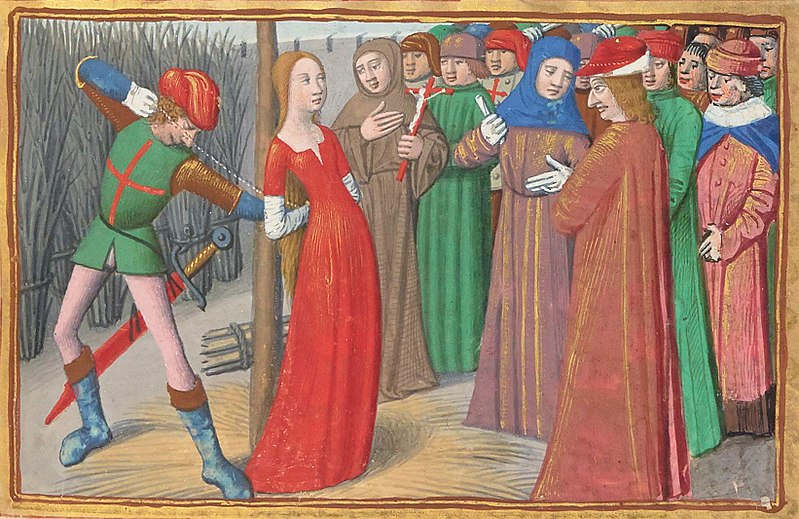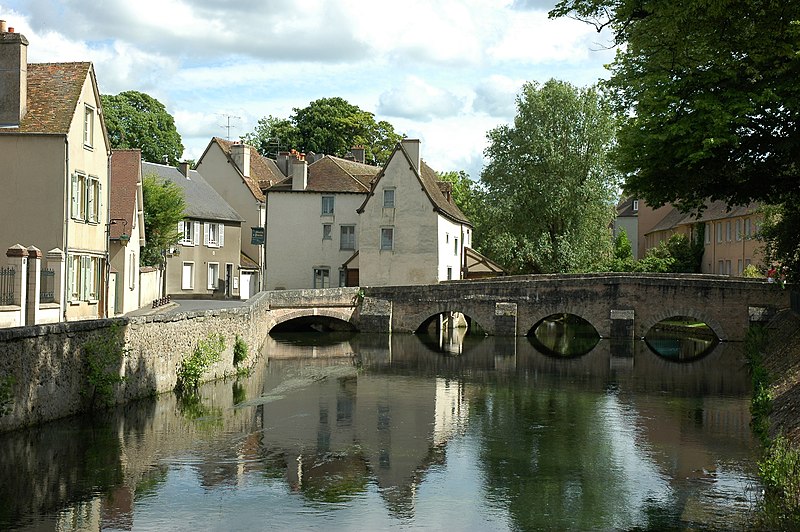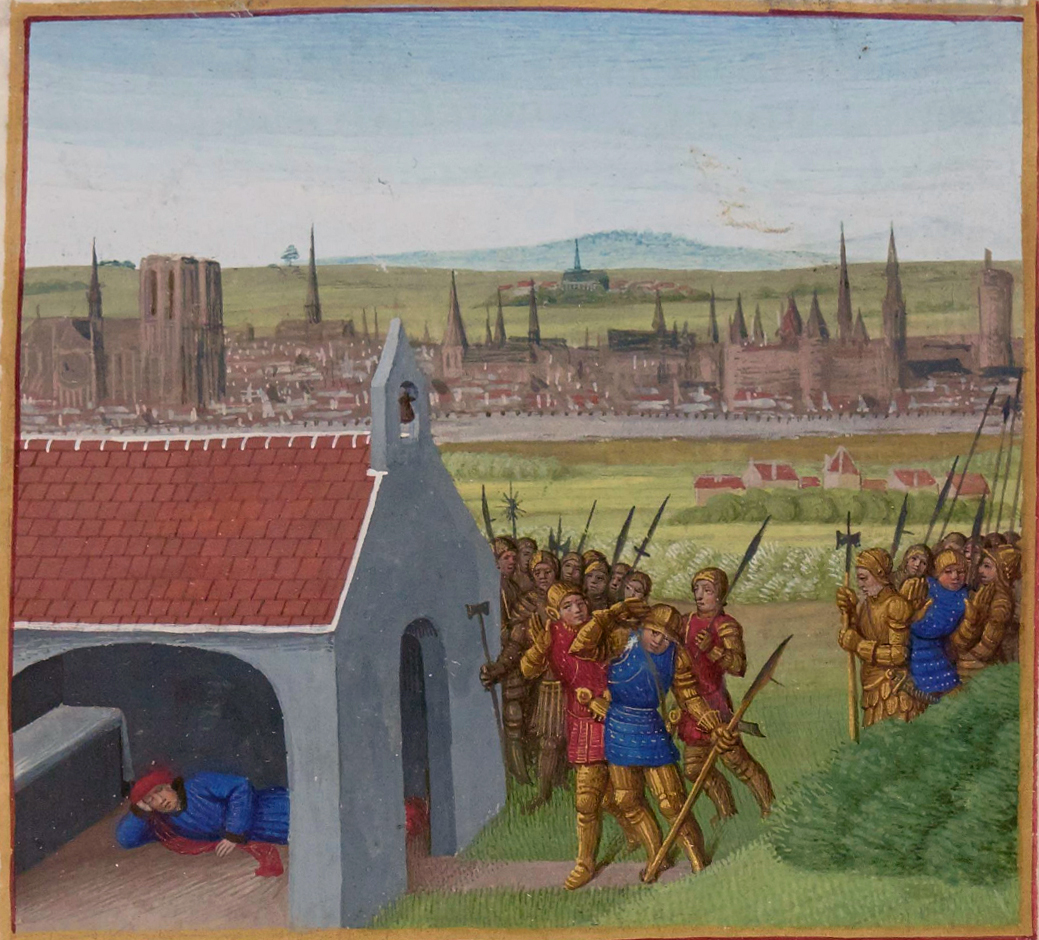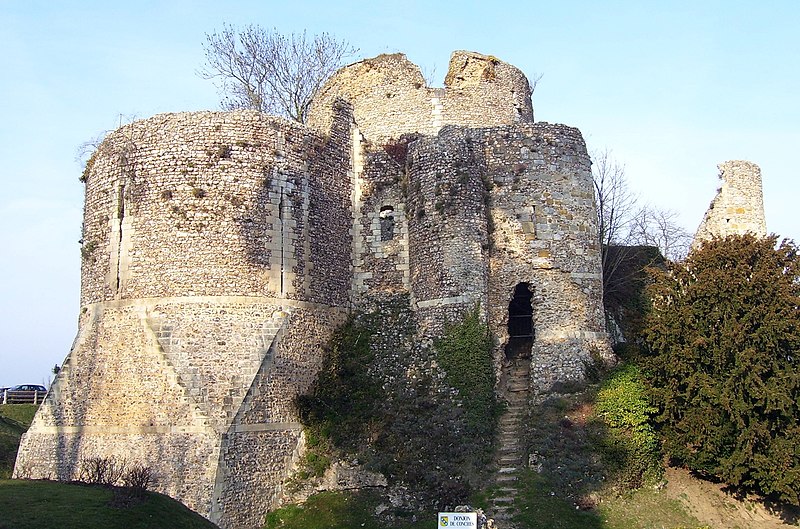 |
| Charles VII |
En route to
the coronation news arrived that Châlons had surrendered and the town of
Troyes had changed its allegiance. On 17th July 1429 Charles VII was
finally crowned as king of France[i] in Rheims cathedral. Jean, along with Alençon and others, was responsible
for carrying the royal insignia, while Joan stood by Charles’ side, dressed in
her armour and carrying her standard.
With the
Loire region mostly back under royal control, and following the battle of Montépilloy in August which ended in a standoff, Joan and the king’s
captains turned their attention on Paris, garrisoned by both the English and
the Burgundians., the French assault on 8th September was a
failure[ii]. Some of the common soldiers
were disillusioned with Joan who had promised them success. Further attempts on
the city were forbidden by Charles who had been unnerved by the Maid’s first
failure.
 |
| Joan at the stake |
During 1429
Jean was made Chamberlain of the Dauphin-Regent, and the Duke of Orléans’ lieutenant
general. In 1430 Périgord, Ferté-Vineuil, Romorantin and Gien were added to the list of
his lordships. At some point Jean was also given the lordships of Château-Renault, Fréteval, Bouteville and Vouvant.
The
successes attributed to the Maid did not suit the king’s favourite Trémoille
who worked to undermine the French people’s inspiration. He cannot have been
displeased when, in May 1430, the Maid was captured by the Burgundians[iii] during an abortive attack on Compiègne. Following a trial by the English she was executed in
January 1431 without Charles VII raising a finger to help her. Jean and La Hire apparently tried,
unsuccessfully, to rescue Joan.
Fighting On
 |
| Chartres |
Jean was in command of
the expedition that captured Chartres in March 1432; Jean took soldiers into the town
hidden in wagons. In August Jean co-commanded the troops that forced the
English Regent, Bedford[iv], to
abandon his four-month siege of Lagny, the English leaving behind their artillery[v]. This
was part of a number of attacks on English positions focussing on Rouen, Chartres
and Maine as well as Lagny. The English were now thinking in terms of a peace
treaty, parliament voted to ‘ordain and advise’ Bedford and Gloucester to seek
terms;
‘It is not suitable
or fitting….for a Christian prince to refuse peace offered with suitable
conditions, nor the resulting treaty….and also considering the burden of the
war, and how grievous and heavy it is to this land; and therefore how
beneficial peace would be for it.’[vi]
It was to be
some yet before the adversaries could be brought to terms.
1433 saw the
removal of Georges
de la Trémoille as
the king’s favourite; Charles VII did not intervene . He had frequently interfered in the
conduct of the war to cut down potential rivals to his position[vii], including Richemont. Jean
was made Great Chamberlain to the King in Trémoille’s place,
while the king’s brother-in-law, Charles of Anjou replaced the former favourite at the
king’s side. Jean was also made a permanent member of the king’s council.
In 1434 the
capture of Poton de Xaintrailles by the English saw him exchanged for John
Talbot, one of England’s premier commanders. Talbot’s return to the battlefield
resulted in a number of instant English successes.
A Truce Between Sworn Enemies
 |
| Paris |
The Treaty of Arras[viii] in 1435 reconciled Charles VII and
Philip the Good, who thereby jeopardised his relationship with the English for
the dubious advantages of allying with the untrustworthy king of France. The
death of the English Regent Bedford in September 1435 was a further blow to the
English.
A further problem
came in April 1436 when Paris fell to Jean and Arthur de Richemont without a shot being fired. Jean cut
off the communications link between Paris and Normandy. A number of the Burgundian
captains defected to the French who were closing in for the kill. The English
garrisons retired to the Bastille but surrendered without making a
stand despite the fortress being well-stocked to withstand a siege.
 |
| Hue de Lannoy |
In the
autumn of 1436 Hue de Lannoy, one of the Duke of Burgundy’s counsellors, wrote to his master about the
prospects for peace in France. He referred to the position of Charles of
Orléans;
‘If the king of France were
to place difficulties in the way of a general peace, the bastard of Orléans and
several captains who are close friends of my lord of Orléans….could well
persuade the king to change his mind in favour of [my lord of Orléans], thus
facilitating the peace.’[ix]
The fight
between the Burgundian and Armagnac factions ceased to be relevant after this
time as Charles promised to do penance for the murder of John the Fearless.
Revolt
In 1439, as
a reward for his loyalty, Jean’s half-brother Charles made him the Count of Dunois[x]. He was also given the lordships of Marchenoir, Beaugency, and Cléry. In 1439 Dunois married again in the cathedral in Orléans; his new
bride was Marie d'Harcourt, Lady
of Parthenay, Secondigny, Vouvant, Mervant, Matefalon and Duretal.
Marie was the daughter of Jacques II d'Harcourt, Baron of Montgomery, and
Marguerite de Melun[xi],
countess of Tancarville.
The
following year Dunois was persuaded to participate in the Praguerie in 1440 against Charles VII. The main instigators were the Duke of
Bourbon who three years before had attempted a similar rising, and had been
forced to ask pardon of the king and the duke of Alençon. The revolt was
supported by the fifteen year old dauphin Louis who was already champing at the bit.
 |
| John, Duke of Brittany |
Hoping to
rid the king of his current favourites and with a desire for more involvement
in decision making[xii], Bourbon and his bastard
brother, John, were joined by the former favourite la Trémoille, John VI, duke of Brittany who allied himself with the English, Alençon, the count
of Vendôme, and a
number of mercenary captains. They planned to make the Dauphin Louis Regent for
his father.
An attempt to capture the person of the king failed and
prompt action by Charles VII’s men put the insurrection down. Louis was forced
to beg forgiveness from his father. The Bishop of Beauvais wrote
to the king;
‘What comfort has this been to us, your poor sheep, who are here in the
frontier? This is not the way we want you to awake – pursuing my very redoubted
lord your son and others of your blood who did what they did, it seems, from a
desire to have a voice in your council.’[xiii]
Dunois’ involvement in the affair was not held against
him; the king needed his captains to prosecute the war against the English….and
the Burgundians
English Resurgence
 |
| Chateau de Conches |
In August 1440 the English decided to besiege Harfleur; with the
revolt over Charles VII sent an army under Richemont and La Hire to break the
siege. Despite the best efforts of the French the town surrendered to the
English in October.
The showpiece of 1441 was the siege of Pontoise. The English
siege faced an army of around 5,000 with the majority of the senior French
captains present. But Charles had decided to hamstring his commanders, by
giving orders not to give battle unless the numbers were overwhelming; in Paris
the wits proclaimed;
‘Whenever the French find themselves in a superiority of three to one they
immediately retreat.’[xiv]
These
retreats gave the English an unlooked for advantage as the French avoided
combat at all costs. Pontoise finally fell in September a month after the fall
of Conches which Dunois retook the following
August. 500 soldiers of the garrison were slaughtered and the remainder were
ransomed including their commander John, Baron Clinton.
Bibliography
The Hundred
Years War – Alfred Burne, Folio Society 2005
The Real
Falstaff – Stephen Cooper, Pen and Sword Military 2010
Joan of Arc
– Kelly DeVries, the History Press 2011
The Reign of
Henry VI – RA Griffiths, Sutton Publishing Ltd 1998
The
Fifteenth Century – EF Jacob, Oxford University Press 1997
Louis XII –
Paul Murray Kendall, Sphere Books Ltd 1974
Joan of Arc
– Edward Lucie-Smith, Classic Penguin 2000
John Talbot
and the War in France – AJ Pollard, Pen and Sword Military 2005
Philip the
Good – Richard Vaughan, Boydell Press 2014
www.wikipedia.en
[i]
Henry VI was crowned king of France
at Notre-Dame, in Paris, on 16 December 1431. All French kings
were crowned at Rheims in the cathedral there
[vii]
Trémoille had ensured that troops for the attack on Paris arrived too late to
be of use and forcing the siege to be aborted, In September 1432 La Trémoille
paid for Rodrigo de Villandrando and his routiers to
hold Les Ponts-de-Cé against the assaults of Jean
de Bueil, presumably afraid that de Bueil would receive the king’s favour
if he took the bridge.
No comments:
Post a Comment
Note: only a member of this blog may post a comment.